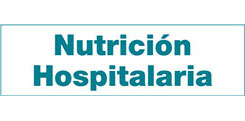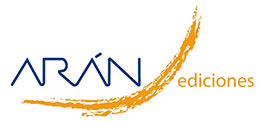Trabajo Original
Assessment of nutritional status and bone health in neurologically impaired children: a challenge in pediatric clinical practice
Elena Crehuá-Gaudiza, Mónica García-Peris, Caterina Calderón, Carmen Jovaní-Casano, María Antonia Moreno, Cecilia Martínez Costa
 Número de descargas:
102939
Número de descargas:
102939
 Número de visitas:
7448
Número de visitas:
7448
 Citas:
0
Citas:
0
Compártelo:
Introduction: neurologically impaired children frequently experience nutritional disorders and bone health complications. Our aim was firstly to analyze a method to interpret bone mineral density (BMD) accurately in neurologically impaired children. Secondly, to determine its relationship with the nutritional status and micronutrient levels in order to identify which factors are associated with low BMD. Methods: a observational multicenter study was conducted in children with moderate-to-severe neurological impairment. Data collected included: medical records, anthropometric measures, hematologic and biochemical evaluation. BMD was measured with Dual-energy X-ray absorptiometry and z-scores were calculated adjusting for sex and chronological age. Secondly, BMD z-scores were calculated applying height age (age at which the child’s height would be in 2nd percentile) instead of chronological age. Results: fifty-two children were included (aged 4-16 years). Seventeen patients (32.7%) received feeding by gastrostomy tube. Height and BMI z-score were below 2SD in 64% and 31% of patients respectively, with normal mid upper arm circumference and skinfold thickness measurements. Low vitamin-D levels were found in 42% of cases. 50% of patients evidenced low BMD when calculated for chronological age, whereas only 34.5% showed BMD z-score <-2 when calculated for height age. No correlation was observed between BMD and vitamin-D levels, weight and height z-scores or age when BMD was calculated applying height age. Conclusions: the prevalence of low BMD is high in neurologically impaired children, and it is probably multifactorial. In these children, we suggest adjusting BMD for height age, in order not to over diagnose low BMD.
Palabras Clave: Disabled children. Cerebral palsy. Nutritional assessment. Bone mineral density. Bone health.
DOI: 10.1038/ejcn.2013.227
DOI: 10.1111/j.1365-277X.2010.01146.x
DOI: 10.1017/S0012162200001249
DOI: 10.1002/ddrr.14
DOI: 10.1097/01.mpg.0000228124.93841.ea
DOI: 10.1542/peds.110.1.e5
DOI: 10.1542/peds.2006-0298
DOI: 10.1111/cch.12085
DOI: 10.3233/PRM-140280
DOI: 10.1111/j.1469-8749.1997.tb07414.x
DOI: 10.1007/978-1-4419-1788-1_78
DOI: 10.1001/archpedi.1995.02170190068012
DOI: 10.1111/j.1651-2227.2006.tb02378.x
DOI: 10.1093/ajcn/34.11.2540
DOI: 10.3390/nu5010111
DOI: 10.1017/S0007114508006818
DOI: 10.1210/jc.2006-2553
DOI: 10.1111/j.1469-8749.2011.04091.x
DOI: 10.1097/MPG.0000000000001646
DOI: 10.1016/j.jocd.2014.01.002
DOI: 10.1542/peds.2010-2801
DOI: 10.1111/j.1469-8749.2007.00167.x
DOI: 10.1111/j.1469-8749.1998.tb12329.x
DOI: 10.1210/jc.2009-2057
DOI: 10.1210/jc.84.12.4702
DOI: 10.1016/j.jocd.2014.01.005
DOI: 10.1111/j.1469-8749.1997.tb07415.x
DOI: 10.1111/j.1469-8749.2009.03464.x
DOI: 10.1016/j.jpeds.2005.02.024
DOI: 10.12809/hkmj154588
DOI: 10.1111/j.1469-8749.2009.03384.x
DOI: 10.1111/dmcn.13196
DOI: 10.1177/0148607112447200
DOI: 10.1097/MPG.0b013e31828f3c05
DOI: 10.1210/jc.2015-2175
DOI: 10.1007/s12185-008-0191-3
Artículos Relacionados:
Trabajo Original: Influencia del suplemento con inulina enriquecida con fructooligosacáridos sobre el contenido y la densidad mineral ósea tras el parto y la lactación en ratas
Pilar Bueno Vargas , Manuel Manzano Martín , Inmaculada López-aliaga , José M.ª López Pedrosa
Trabajo Original: Densidad mineral ósea en niños celiacos. indicaciones de estudio y efecto de la exclusión del gluten de la dieta
Cristina Iglesias Blázquez , Francisco Jorquera Plaza , José Antonio De Paz Fernández , Luis Miguel Rodríguez Fernández
Trabajo Original: Densidad mineral ósea e indicadores bioquímicos y hormonales en niños con parálisis cerebral cuadripléjica
Citlalli Álvarez Zaragoza , Edgar Manuel Vásquez-Garibay , Andrea Anaís García Contreras , Alfredo Larrosa-Haro , Enrique Romero-Velarde , Alejandro Rea Rosas , José Luis Cabrales de Anda , Israel Francisco Vega Olea
Editorial: Productos lácteos suplementados y salud ósea
Manuel Muñoz Torres , Araceli Muñoz Garach
Trabajo Original: Obesity and cardio-metabolic risk factors among children and adolescents with cerebral palsy
Salesa Barja , Catalina Le Roy , Cecilia Sepúlveda , Maria Luisa Guzmán , Marithza Olivarez , María José Figueroa
Trabajo Original: Post-menopausal osteoporosis: do body composition, nutritional habits, and physical activity affect bone mineral density?
Özlem Özpak Akkuş , Betül Gülşen
Trabajo Original: Asociación del polimorfismo TaqI del gen del receptor de la vitamina D con la densidad mineral ósea en mujeres mexicanas jóvenes
Trabajo Original: Association between dietary antioxidant quality score (DAQs) and bone mineral density in Spanish women
Trabajo Original: Disminución de masa ósea post-cirugía bariátrica con by-pass en Y de Roux
Revisión: Energy availability, menstrual dysfunction and bone health in sports; an overwiew of the female athlete triad
Trabajo Original: Densidad mineral ósea y adecuación de la dieta en pacientes con enfermedad renal crónica en hemodiálisis
Trabajo Original: Intensive nutritional support improves the nutritional status and body composition in severely malnourished children with cerebral palsy
Revisión: Adherence to Mediterranean diet and bone health
Trabajo Original: Relación del estado nutricio, densidad mineral ósea tanto corporal como mandibular, pérdida dentaria y riesgo de fractura (FRAX), en mujeres pre y postmenopáusicas con periodontitis
Trabajo Original: Densidad mineral ósea, calcio dietético y factores presuntivos de riesgo de osteoporosis en mujeres ecuatorianas de la tercera edad
Trabajo Original: Los niveles de mineralización ósea están influenciados por la composición corporal en niños y adolescentes
Trabajo Original: Energy expenditure in children with cerebral palsy and moderate / severe malnutrition during nutritional recovery
Trabajo Original: Valoración del perfil lipídico y de la densidad mineral ósea en pacientes trasplantados renales
Trabajo Original: Efectos sobre la composición corporal y la densidad mineral ósea de un programa de altitud simulada en triatletas
Trabajo Original: Lactancia materna como factor preventivo para la osteoporosis en mujeres adultas
Trabajo Original: Metabolismo óseo en pacientes valorados para trasplante pulmonar
Pilar Calmarza , Alejandro Sanz Paris , Clara Berrozpe-Villabona , Alba Gallego Royo , Juan Antonio Domingo Morera , Manuel David Viñuales Aranda
Trabajo Original: Clinical value of vitamin K testing in children aged 1-2 years with vitamin D deficiency rickets
Lipu Jie , Lijuan Niu , Tingting Lu , Qing Sun
Revisión: Alimentación para mantener una adecuada salud muscular y ósea
Liliana Guadalupe González-Rodríguez , Isabel Borrás Olivares , Yalda Ghazi , María Carmen Lozano Estevan , Rosa M. Ortega
Trabajo Original: NHANES data analysis of the cardiometabolic index in relation to lumbar spine bone mineral density
Rui Zhu , Chao-Ren Deng , Shao-Ping Wu
Trabajo Original: Higher frequency of adding salt to foods increases the risk of low bone mineral density in individuals over 60 - A Mendelian randomization study
Ying Li , Yuhan Wang , Lianying Guo , Ye Yu , Mengqi Jiang , Lili Deng , Qingyi Zhou , Lu Sun , Xu Feng , Zhuo Zhang
Trabajo Original: Causal relationship between tea intake and bone mineral density at different ages ̶ A Mendelian randomization study
Ting Shen , Yining Guan , Jiaru Cai , Yizhou Jin , Yixin Jiang , Jiaying Lin , Chenxin Yan , Jiawei Sun
Trabajo Original: Utility of equations that consider gross motor function to estimate height in a Mexican population of children and adolescents with cerebral palsy
Andrea Anais García-Contreras , Jorge Abraham García-Íñiguez , Dennis Camacho-Buenrostro , Edgar Manuel Vásquez-Garibay , Luisa Fernanda Martínez Romero , Jimena Mújica-Páez , Andrea María Murrieta-Verduzco , Ana Paula Rojas-Chávez
Trabajo Original: Better bone health in children and adolescents represents better performance in physical fitness
José Fuentes-López , Rubén Vidal-Espinoza , Zaida Callata-Gallegos , José Supo-Gutiérrez , Rossana Gómez-Campos , Camilo Urra-Albornoz , Luis Felipe Castelli-Correia de Campos , José Sulla-Torres , Marco Cossio-Bolaños
Revisión: El huevo en la dieta de la mujer durante el climaterio. Papel en el mantenimiento de la salud
Ana M. López-Sobaler , Laura M. Bermejo , África Peral-Suárez , Aránzazu Aparicio
Artículos más populares
Revisión: Inteligencia artificial generativa ChatGPT en nutrición clínica: avances y desafíos
ChatGPT y otras herramientas de inteligencia artif...
Revisión: Suplementación con micronutrientes y sus beneficios: ¿por qué y cuándo?
Introducción: los micronutrientes participan en la...
-
Licencia creative commons: Open Access bajo la licencia Creative Commons 4.0 CC BY-NC-SA
https://creativecommons.org/licenses/by-nc-sa/4.0/legalcode




